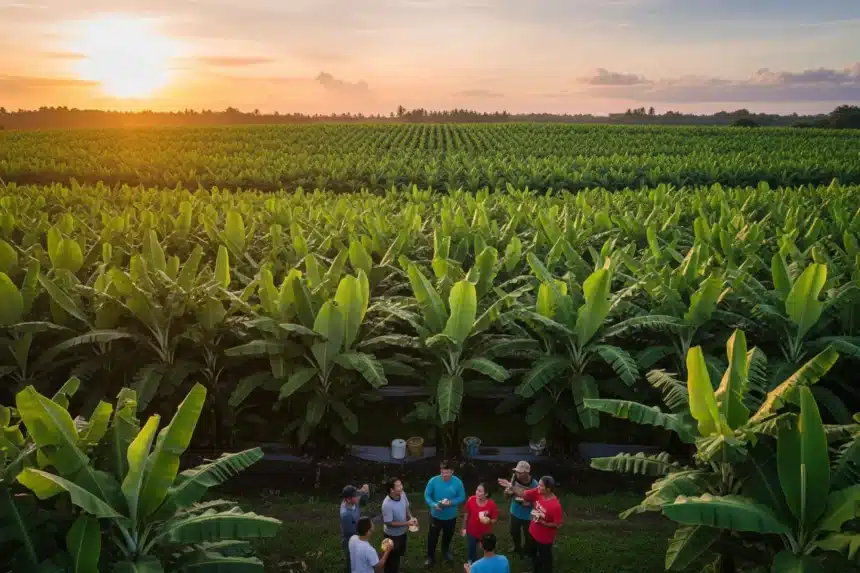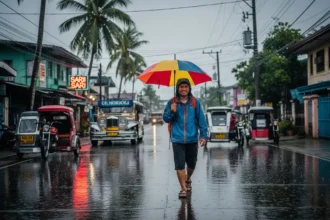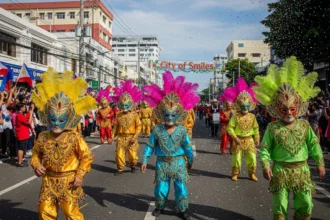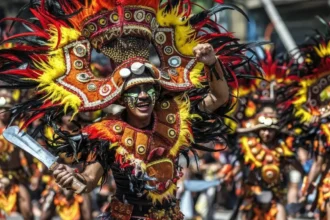There’s a unique kind of beauty in the landscapes that feed a nation. It’s a beauty found not in dramatic cliffs or white-sand beaches, but in the endless, orderly rows of green that stretch as far as the eye can see. This is the sight that welcomes you to Panabo City, the undisputed Banana Capital of the Philippines. Located in the fertile plains of Davao del Norte, Panabo is a city built on agricultural pride, a place where the rhythm of life is tied to the harvest.
For travelers seeking to understand the backbone of Mindanao’s economy and witness a community deeply connected to the land, a visit to Panabo is an essential experience. This is not a typical tourist hotspot; it is a city of substance, offering a grounded and authentic look into the world of agribusiness, the warmth of its hardworking people, and the quiet beauty of its coastal plains. This Panabo travel guide will take you beyond the plantations to discover the culture, food, and natural charm of this vital Filipino city.
📜 A City Rooted in the Land
Panabo’s identity was forged from its rich soil. Originally a small settlement of the indigenous Aeta people, its name is said to have come from pana-bo, or the bow and arrow they carried. The arrival of Visayan migrants transformed the area into a thriving agricultural hub. Officially becoming a city in 2001, Panabo’s growth has been fueled by the global demand for one fruit: the banana. It’s home to some of the largest plantations in the world, including the famous Tagum Agricultural Development Company (TADECO), making it a powerhouse of Philippine agriculture.
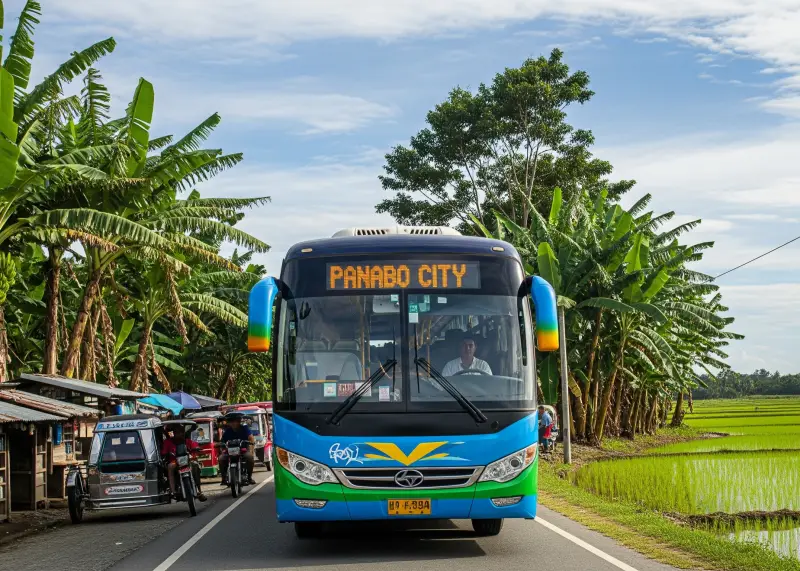
✈️ Planning Your Trip: Getting There and Staying Over
Reaching the Banana Capital is straightforward, thanks to its proximity to a major urban center. Its strategic location makes it an easy and rewarding destination for a multi-day trip.
How to Get to Panabo
The primary gateway is Davao City, which is well-connected to the rest of the country.
- Fly to Davao City (DVO): All major local airlines have multiple daily flights to Davao International Airport from Manila, Cebu, and other key cities.
- Travel by Land: From the airport or the Ecoland Bus Terminal in Davao City, Panabo is just a 45-minute to 1.5-hour journey by bus, van, or private car via the scenic Pan-Philippine Highway.
Where to Stay
Panabo offers a range of practical and comfortable accommodations suitable for travelers. You won’t find luxury resorts, but you will find clean, friendly, and affordable places to rest.
- City Hotels and Inns: Options like Madonna Hometel and Suites or Jams Apartelle provide accessible and reliable lodging within the city proper, close to restaurants and transport hubs.
- Agri-tourism Stays: For a more unique experience, look for accommodations within or near agri-tourism sites like Agriya, which can offer a more immersive, nature-centric stay.
🗺️ A 3-Day Panabo Itinerary: The Best of Farm and Coast
To truly appreciate what Panabo has to offer, a three-day visit allows you to explore its agricultural heart, its coastal attractions, and its local culture at a relaxed pace.
Day 1: The Heart of the Banana Industry
- Morning: Immerse yourself in the world of bananas. Arrange a visit to Agriya, an impressive 88-hectare agri-tourism township by Damosa Land. It features a banana plantation, educational farm experiences, and beautiful green spaces.
- Afternoon: Explore the San Agustin Botanical Park, a sprawling green sanctuary perfect for a relaxing stroll. It features a diverse collection of trees and plants from around the world.
- Evening: Have dinner at one of the city’s popular grill houses, enjoying fresh, local ingredients.
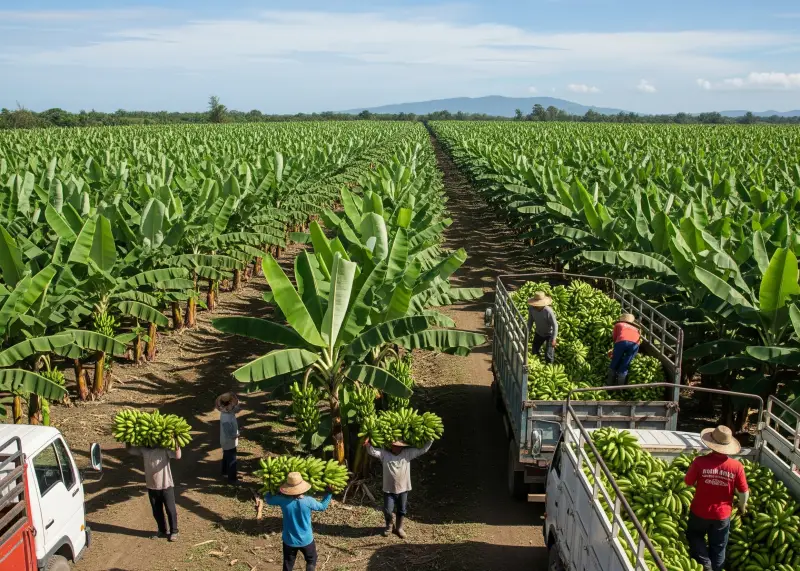
Day 2: Coastal Charm and Natural Wonders
- Morning: Head to Barangay JP Laurel to experience the Mangrove Forest Boardwalk. This vital eco-park allows you to walk through a protected 94-hectare mangrove forest, offering a peaceful escape and a chance to appreciate the region’s coastal biodiversity.
- Afternoon: Relax at the Panabo City Seawall, a popular spot for locals to unwind. Enjoy the sea breeze, watch the boats go by, and sample some street food from nearby vendors.
- Evening: Visit the city’s Freedom Park, located near the modern City Hall, where you might catch a local event or simply enjoy the community atmosphere.
Day 3: City Life and Local Flavors
- Morning: Visit the Panabo City Public Market to see the abundance of local produce. This is the best place to buy fresh fruits like bananas, pomelos, and marang at local prices.
- Afternoon: Explore the city center, visit local shops, and try some of the local bakeries and cafes for merienda.
- Evening: Enjoy a farewell dinner at a restaurant that serves fresh seafood sourced directly from the Davao Gulf.
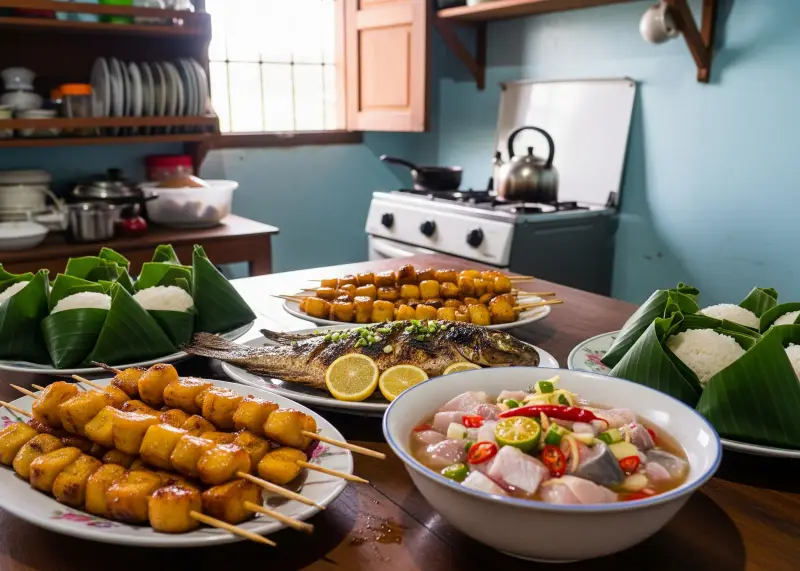
🍽️ Taste of the Land: What to Eat in Panabo
Panabo’s culinary scene is a direct reflection of its agricultural wealth. The food here is fresh, hearty, and unpretentious.
| Must-Try Experience | Description |
|---|---|
| Fresh Cavendish Bananas | You cannot leave the Banana Capital without tasting the bananas right from the source. They are sweeter and creamier than you can imagine. |
| Pomelo and Other Fruits | The Davao region is famous for its sweet, juicy pomelos. You’ll also find an abundance of marang, durian (in season), and mangoes. |
| Fresh Seafood | Being on the coast of the Davao Gulf, Panabo offers delicious and affordable seafood. Look for grilled tuna belly, kinilaw (Filipino ceviche), and steamed shrimp. |
| Banana-based Snacks | Enjoy classic Filipino merienda made with the city’s star product: turon (banana spring rolls), banana cue, and maruya (banana fritters). |
🎊 Festivals and Community Life
The spirit of Panabo is best experienced during its festivals, which are vibrant celebrations of harvest and heritage. The main event is the Binulig Festival, held every October. The name comes from the Visayan word bulig, which refers to a single banana cluster or bunch. The festival is a thanksgiving for a bountiful harvest, featuring colorful street dancing, agricultural trade fairs, and a palpable sense of community pride.
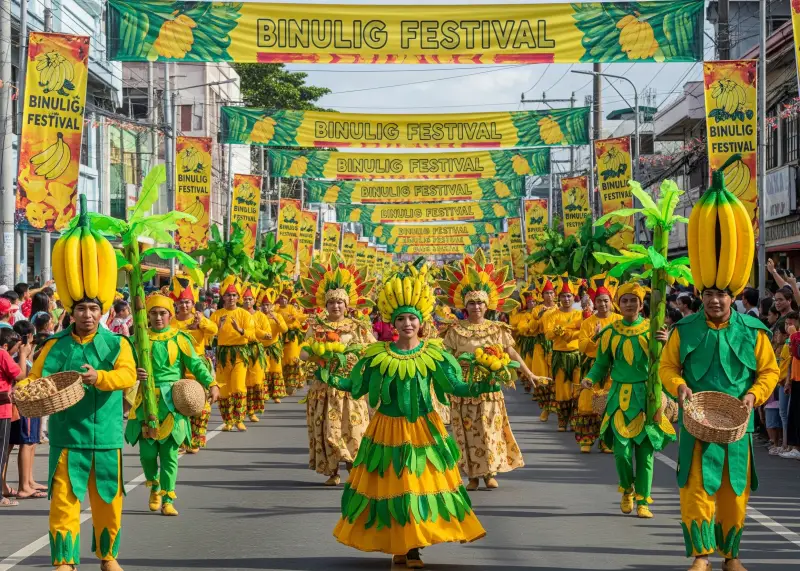
📌 Frequently Asked Questions
1. Is Panabo City safe for tourists? Yes, Panabo is a peaceful and welcoming city. Like any urban area, it’s always wise to practice standard safety precautions, but tourists can generally explore the city with confidence.
2. What is the main language spoken? Cebuano (Visayan) is the predominant language spoken in Panabo, a reflection of its migrant heritage. Tagalog and English are also widely understood.
3. What is the best time of year to visit? To experience the main harvest celebration, visit during the Binulig Festival in October. For the best weather, the dry season from December to May is ideal.
4. Can I visit a banana plantation like TADECO? Large commercial plantations like TADECO are private and generally not open for casual tours due to strict biosecurity protocols. However, agri-tourism sites like Agriya offer excellent, structured tours that showcase the banana cultivation process.
5. What is the local economy based on? While bananas are the star, the economy is also supported by other agricultural products like rice, corn, and coconuts, as well as a thriving fishing industry and growing commercial and industrial sectors.
❤️ A City of Quiet Dignity
In my travels, I’ve found that the most memorable places are often not the loudest or the most glamorous. They are the places with a strong sense of self, a quiet dignity in their work, and a deep connection to their roots. Panabo City is one of those places. It’s a city that understands its identity is rooted in the soil beneath its feet.
A visit here is a humbling reminder of where our food comes from and the incredible labor that goes into it. You leave not just with a full stomach, but with a deeper appreciation for the hardworking farmers and the communities that form the backbone of our nation. Panabo doesn’t need flashy attractions; its charm lies in its authenticity, its green landscapes, and the warm, genuine smiles of its people.



